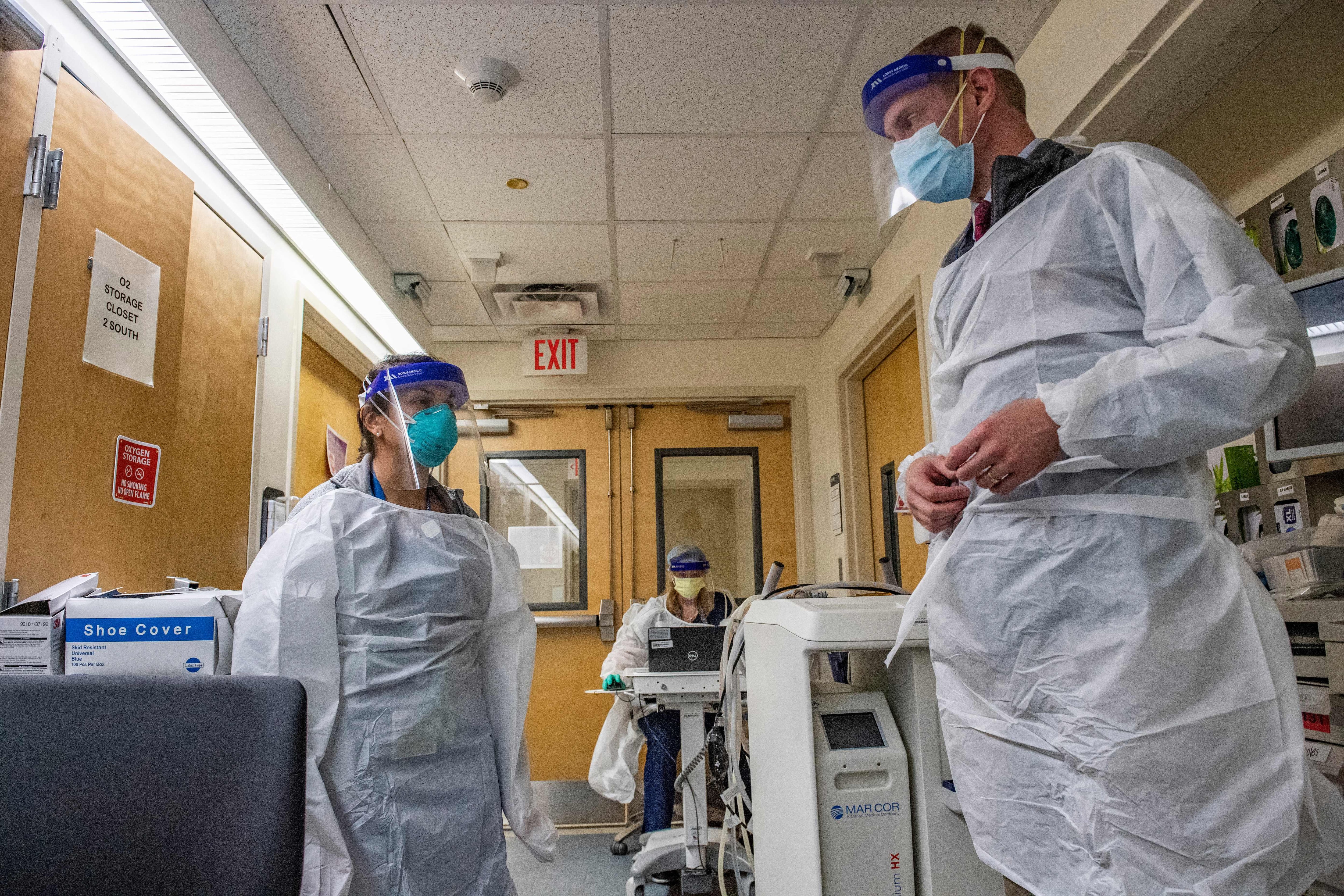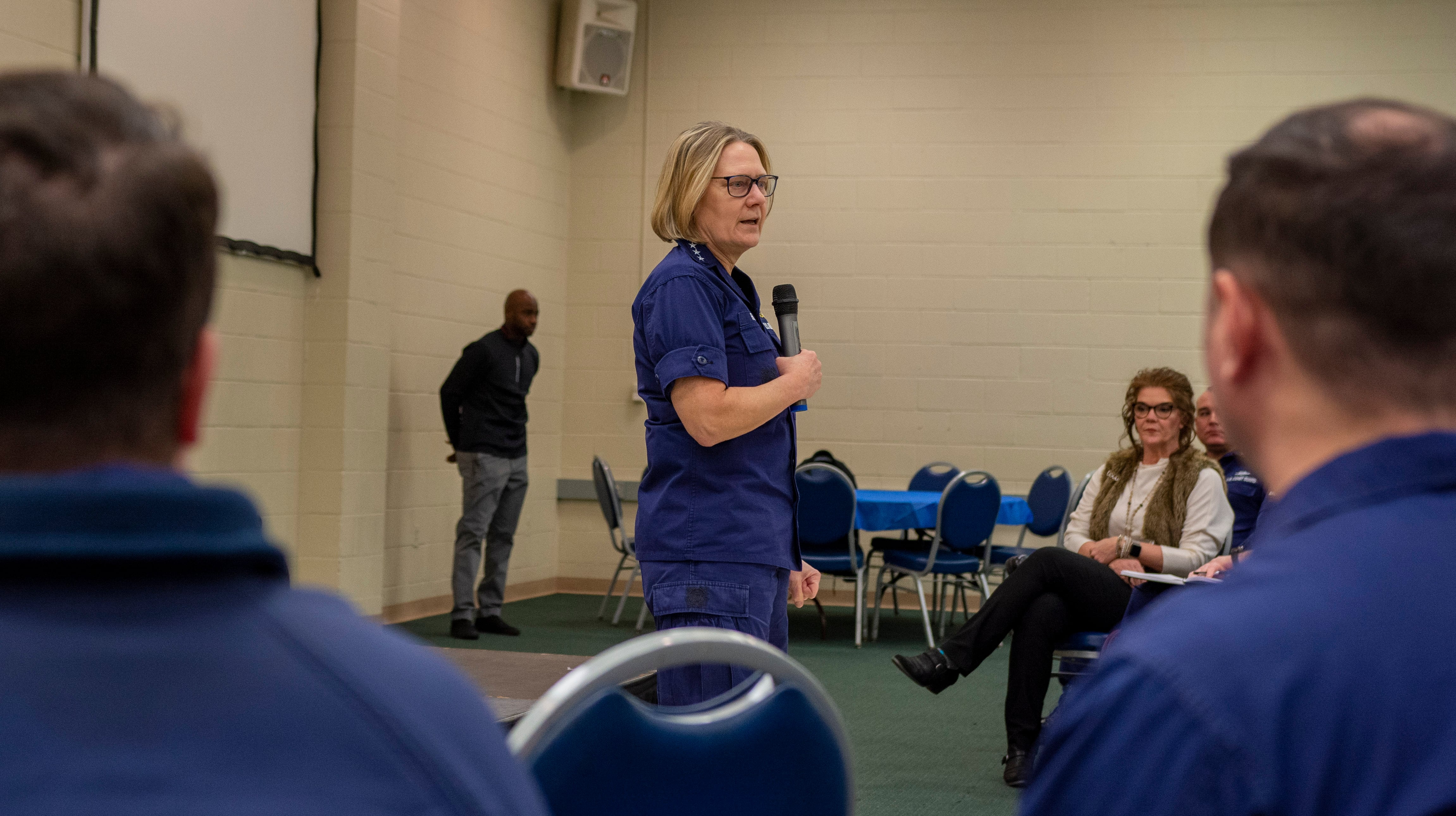ABOARD THE DWIGHT D. EISENHOWER — While millions of Americans celebrate Thanksgiving with family and home-cooked meals, the 5,200 sailors aboard the aircraft carrier Dwight D. Eisenhower are busy launching fighter jets to strike Islamic State targets in Iraq and Syria.
The crew is spending their second Thanksgiving on duty, and will be carving their own roasted turkeys when their duties aboard the thousand-foot long American aircraft carrier allow. Some will spend part of the day flying over the Middle East, dropping precision munitions on IS militants.
"It's not going to stop us from having a great Thanksgiving meal," Capt. Paul C. Spedero, Jr. said. "We're going to watch football when we can. It'll probably be a little bit time-delayed but we're going to do all the things that we can do and what we can expect to do with our families back home," he said.
He estimates the carrier's fighters have dropped nearly 1,100 bombs in the fight against the Islamic State since June, when the carrier began operating in the Persian Gulf. Last Thanksgiving it was deployed off the coast of Virginia.
Rear Adm. James Malloy, commander of the Dwight D. Eisenhower strike group, says his forces are increasingly using precision munitions as IS militants hide and fight among civilians, including in the northern Iraqi city of Mosul.
"They're actually using civilians in military capacity to shield them, knowing that that would stay the hand of the coalition," he said. "The power of the precision, responsive airstrikes that we provide is even more critical than before."
Lt. Jennifer Sandifer, a 27-year-old fighter pilot from Austin, Texas, plans to eat her turkey midmorning before donning a flight suit labeled with her call sign, "Fur."
She'll then climb up a metal ladder and make her way across the flight deck, where engines roar and the air is thick with exhaust fumes. Mechanics and a ground crew there maintain jets for 17 pilots, including her single-seat F/A-18E Super Hornet.
She'll taxi to the launch point where a catapult will connect to the fighter jet. A sailor known as a shooter will signal Sandifer when the catapult is ready and then she'll give a final salute before roaring off the carrier going 0 to 145 mph in 2.5 seconds.
On Thanksgiving, as on any other day, she'll fly six to nine hours and strike targets identified by ground forces, perhaps in Mosul or the Syrian city of Raqqa, the de facto capital of the Islamic State group's self-styled caliphate.
Back on the ship, culinary specialist and Petty Officer 1st Class Antonio Brown is organizing a feast consisting of 4,950 pounds of turkey, 1,050 pounds of ham, 1,200 pounds of beef, 648 pounds of shrimp, 7,000 portions of mashed potatoes, 400 pies, and 200 cheese cakes.
Brown is setting up carving stations for sailors and serving his take on standard Navy recipes, like adding marshmallows to the sweet potatoes. Brown said Thanksgiving is the most important day of the year for the carrier's cooks and kitchen staff.
"It's like the Super Bowl. We care about Christmas, yes indeed, but Thanksgiving we try to show out," Brown said. "When everybody is able to sit down and eat a nice, healthy, nutritious meal and everything, it's like it takes them back."
The carrier's chaplain, Cmdr. Ted Williams, said sailors would celebrate in small groups across the carrier's hold on Thanksgiving.
"That bond, that shared experience of being away and being deployed, also brings us together, and that is what we'll use to draw strength during the day while we're apart from our families back at home," he said outside the carrier's interfaith chapel.
After the Thanksgiving airstrikes and a full day flying, Sandifer will land in the pitch black at night. It's a feat she calls a "controlled crash" and "one of the most terrifying things I've ever done."
"There's no horizon, there's no moon, you can't really see the stars because there's just this haze and all you see is this rectangle of lights with a center line in the middle that's lit up," she said.





